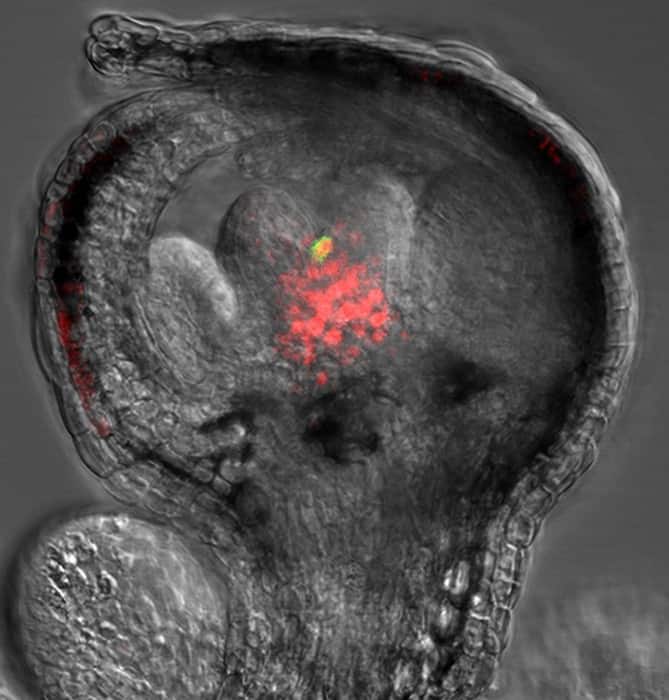
How flowers form properly within a limited time frame has been a mystery, at least until now. Researchers from Japan and China have discovered how a multi-tasking protein helps flowers to develop as expected.
In a study published in Proceedings of the National Academy of Sciences U.S.A., researchers from Nanjing University and Nara Institute of Science and Technology have revealed that a small protein plays multiple roles to ensure that floral reproductive organs are formed properly within a short space of time.
Flowers develop from floral meristems, which differentiate to produce the sepals, petals, stamens, and carpels. The proper development of these floral organs depends on meristem development being completed within a certain time period. In the early stages of flower development, stem cells provide the cell source for floral organ formation. In floral meristems, stem cell activities are maintained via a feedback loop between WUSCHEL (WUS), a gene that identifies floral stem cells, and CLAVATA3 (CLV3), a stem cell marker gene that is activated and sustained by WUS.
“A small protein called KNUCKLES (KNU) represses WUS directly, which leads to the completion of floral stem cell activity at the right time,” says lead author Erlei Shang of the study. “What isn’t fully understood is how the robust floral stem cell activity finishes within a limited time period to ensure carpel development.”
“The team’s research revealed that in Arabidopsis thaliana, KNU can completely deactivate the robust floral meristems at a particular floral stage, thanks to the multiple functions that KNU carries out via its position-specific roles,” says senior author Toshiro Ito.
KNU both represses and silences WUS, and directly represses CLV3 and CLV1 (a gene that encodes a receptor for the CLV3 peptide). Consequently, KNU eliminates the CLV3-WUS feedback loop via transcriptional and epigenetic mechanisms (i.e., those that do not involve changes in the underlying DNA sequences). Additionally, KNU interacts physically with the WUS protein, which inhibits WUS from sustaining CLV3, disrupting interactions that are required for the maintenance of floral meristems.
“Our results reveal a regulatory pathway where KNU plays a key role in supporting the completion of floral meristem development within a short time window, and ensures that flower reproductive organs are properly formed,” says corresponding author Bo Sun.
The results of this research will be useful for genetic studies of food crop species such as rice, tomatoes, and maize. An understanding of the floral meristem termination mechanism discovered in this study will benefit crop yields for food production globally.
from ScienceBlog.com https://ift.tt/3zB3Cye
No comments:
Post a Comment